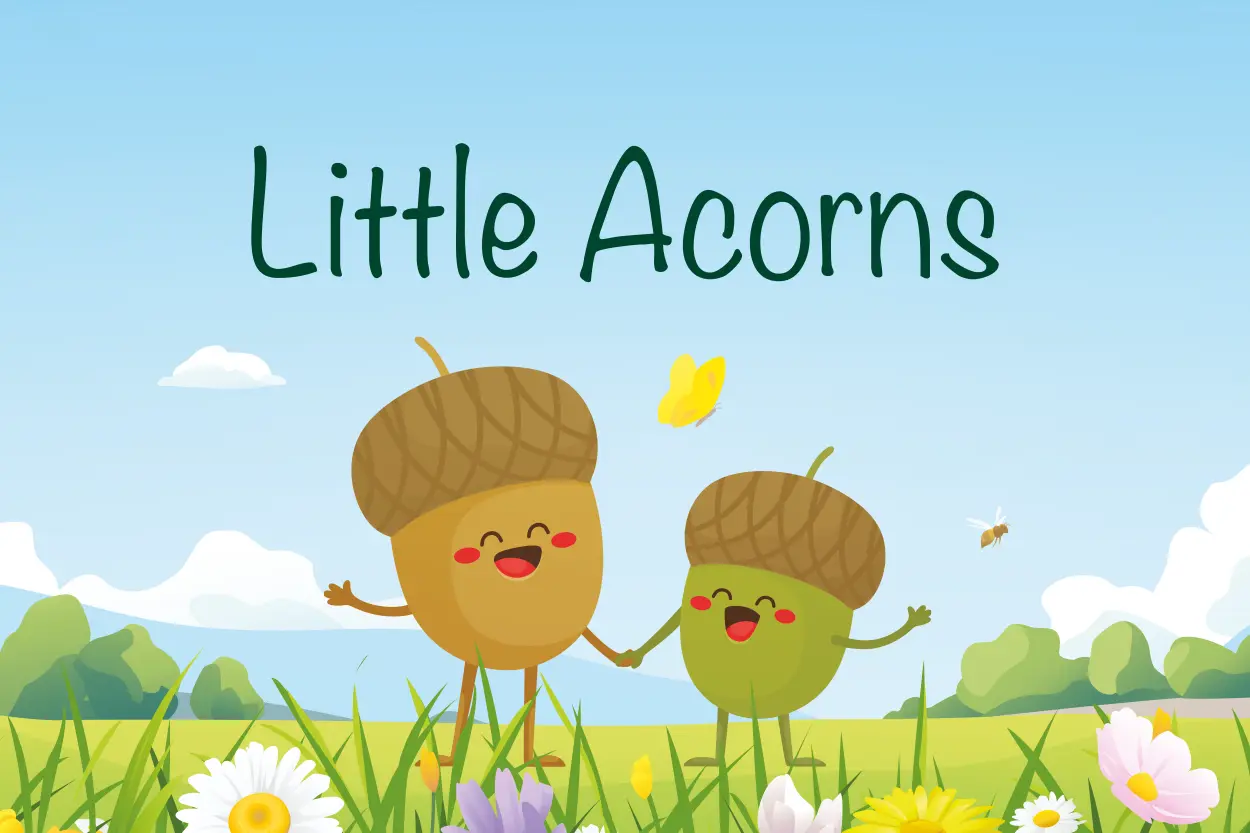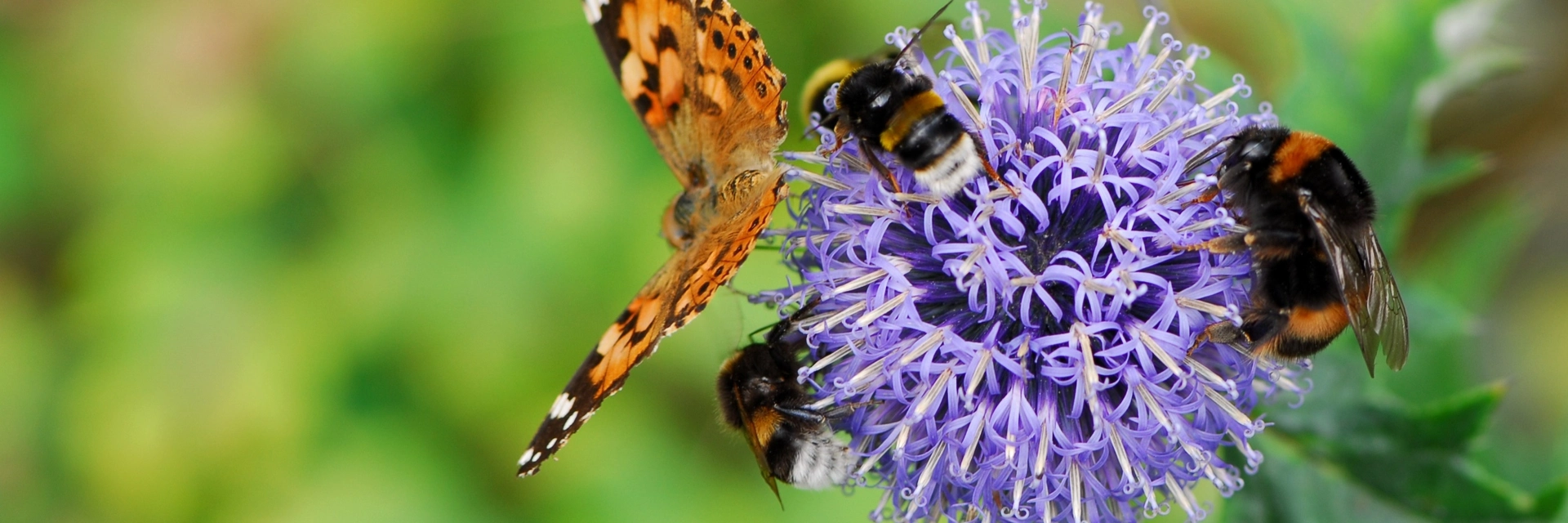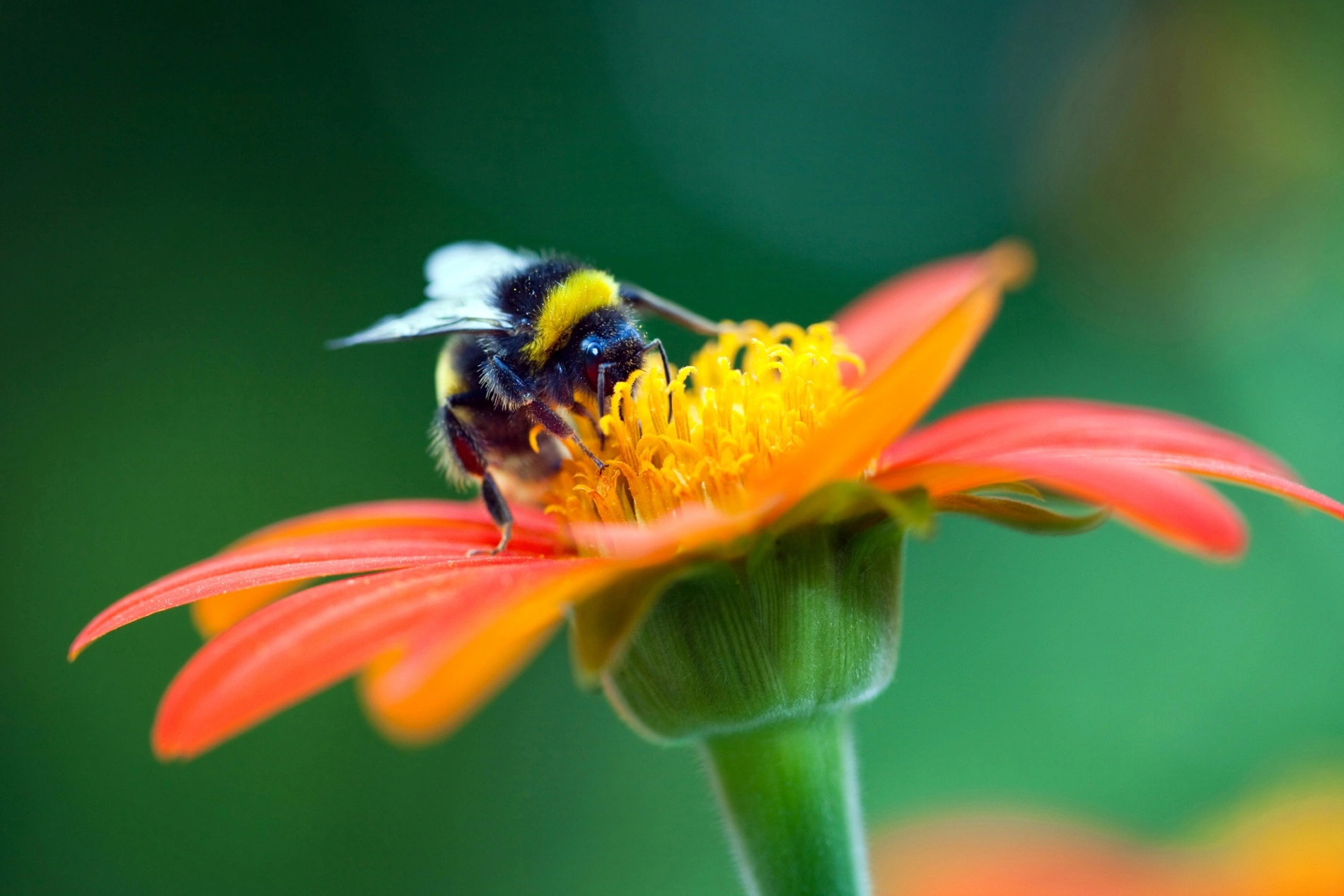
Why should we support bees?
- Bees pollinate 70 of the 100 crop species, that provide 90% of food worldwide, without them we would go hungry!
- Many of our vegetables such as broccoli, asparagus, cucumber, rely on bees for pollination, as do strawberries, apples and tomatoes. Even the coffee we drink daily!
- Bees are in decline and they face many threats to their habitats. This includes the use of toxic pesticide and the loss of woodlands and wildflower meadows.
How many Bee species are there in the UK?
There are 250 species of bee in the UK.
- 1 species of honey bee
- 24 species of bumble bee
- 224 species of solitary bee
Bumble bees and solitary bees do most of the pollinating in our gardens and fields. They are fantastic pollinators! For example, a single solitary Red Mason bee is equivalent to 120 worker honeybees in the pollination it provides!
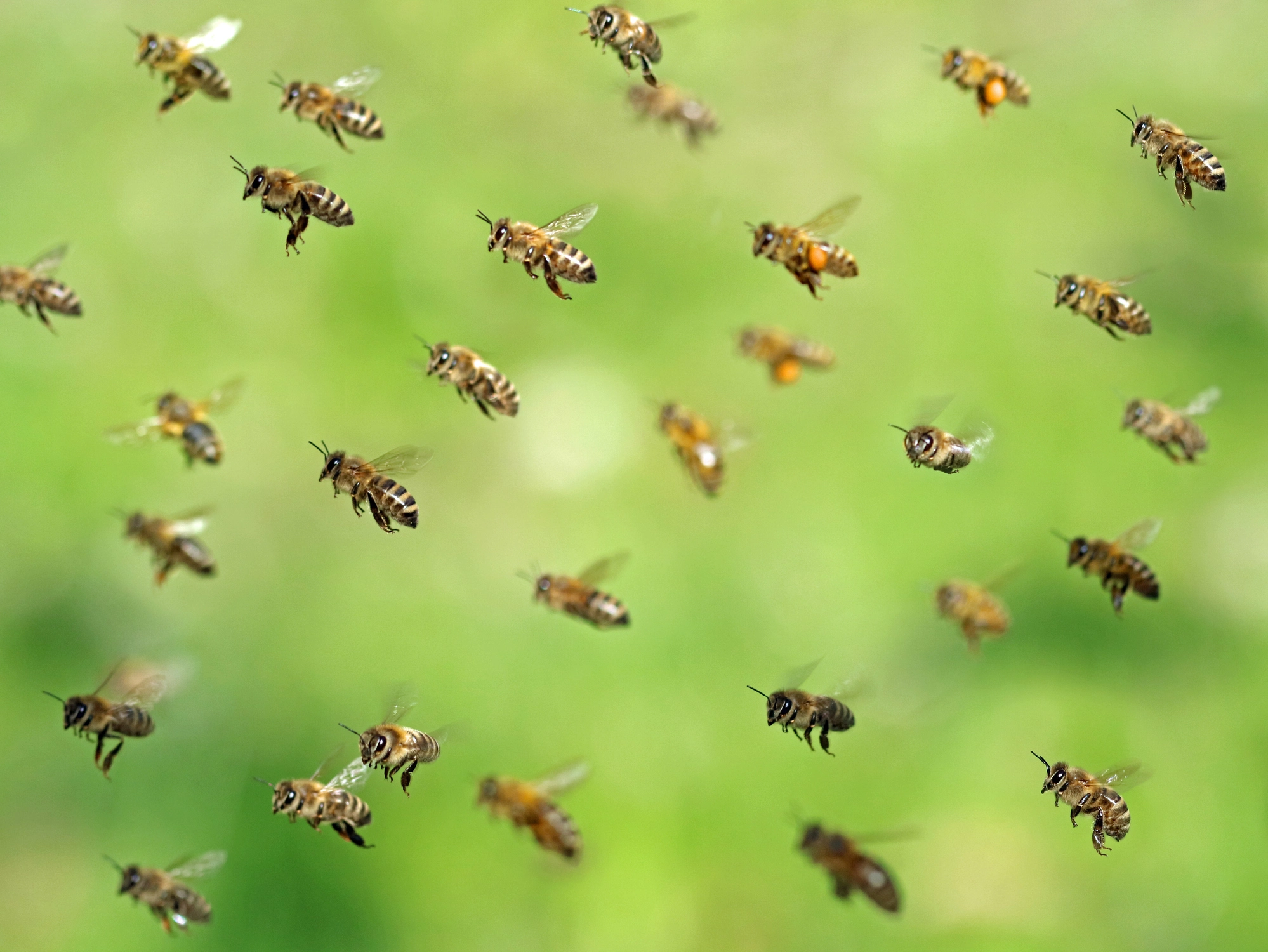
How can you help?
Create a buzzy, bee café in your garden.
Of the 250 species of bee in the UK, your garden is likely to attract 20 species of bee:
- some species of bees are long tongued and some are short tongued.
- some species of bees fly early in spring and some late into autumn.
- some species of bees are small and agile and some are not.
- some species of bees collect pollen on a part of their body and some on all of their body.
- some species of bees are fluffy and some are not.
All of this affects a bee’s choice of plant and flower they will visit to collect pollen and nectar. So, when creating your own ‘buzzy bee café’, aim for a good variety of pollen-rich flowers that have different flower shapes and a range of flowering periods from early spring to late summer and even throughout the winter. Avoid double flowering varieties with lots of petals, as bees generally find these harder to access and they often lack nectar and pollen.
9caf88
Growing bee-friendly plants all year round, is a great way to support our bee populations!
The top plants to attract a good variety of bee species throughout the year include:
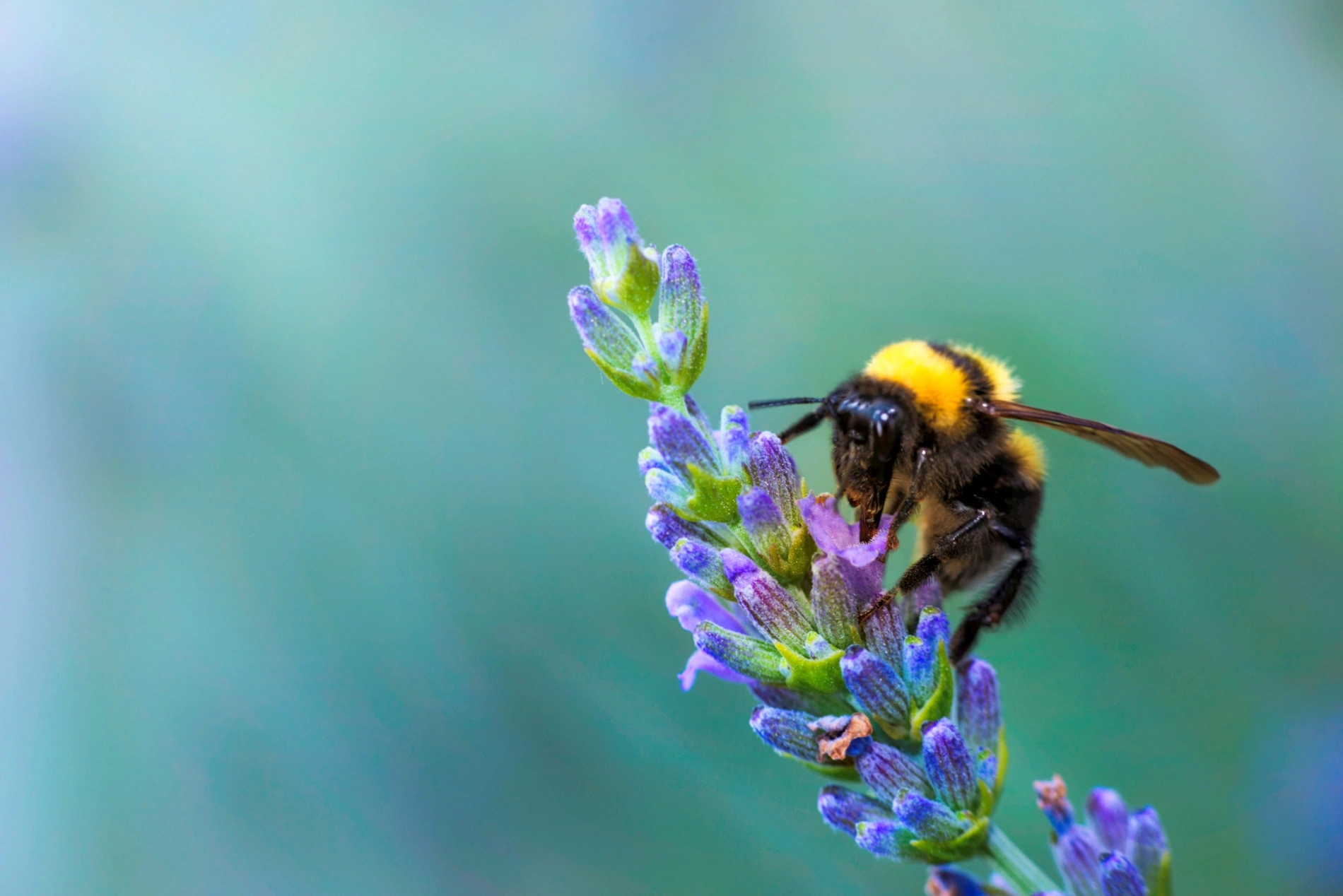
Spring
Aubretia, Bluebells, Ceanothus, Crocus, Erysimum-wallflower, Hazel, Hellebore, Crab Apple, Muscari, Primula, Prunus, Pulmonaria, Myosotis(forget-me-not), Salix, Skimmia, Spring flowering herbs and Orchard trees such as Apple, Pear and Cherry.
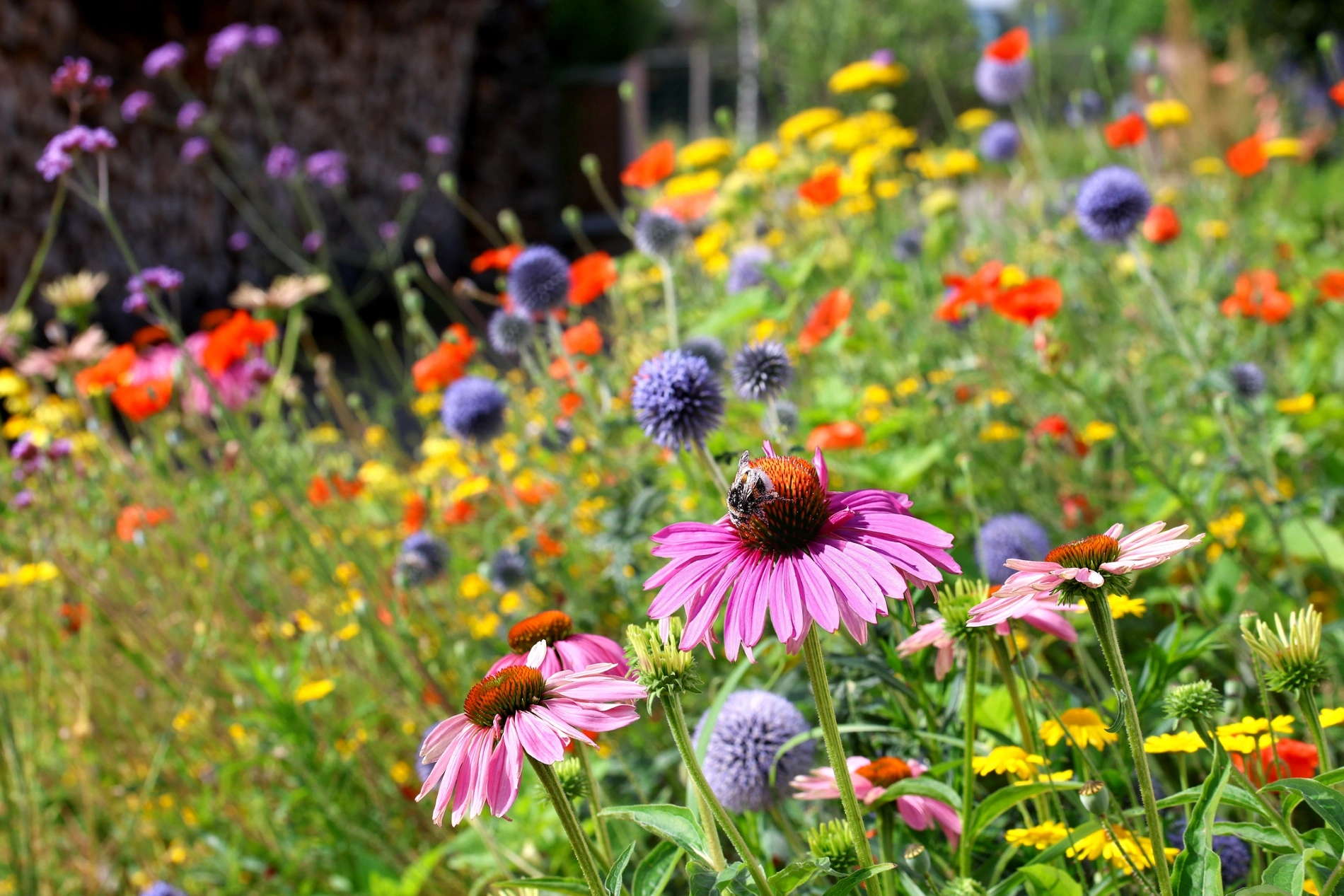
Summer
Alcea, Aster, Achillea, Antirrhinum (Snapdragon), Aquilegia, Black-eyed Susans, Borage, Buddleja, Cat mint, Ceanothus, Cirsium, Clematis, Cosmos, Campanula, Cornflowers, Dahlia- single flowers, Digitalis, Delphinium, Dicentra, Echinacea, Foxgloves, Fuchsia-hardy, Hollyhocks, Honeysuckle, Lavender, Lilacs, Red valerian, Rosemary, Rudbeckia, Sunflower, Salvia, Scabious, Summer flowering herbs such as Marjoram, Rosemary, Fruit and vegetables such as Broad beans, Strawberries, Raspberries, Tomato and Peppers.
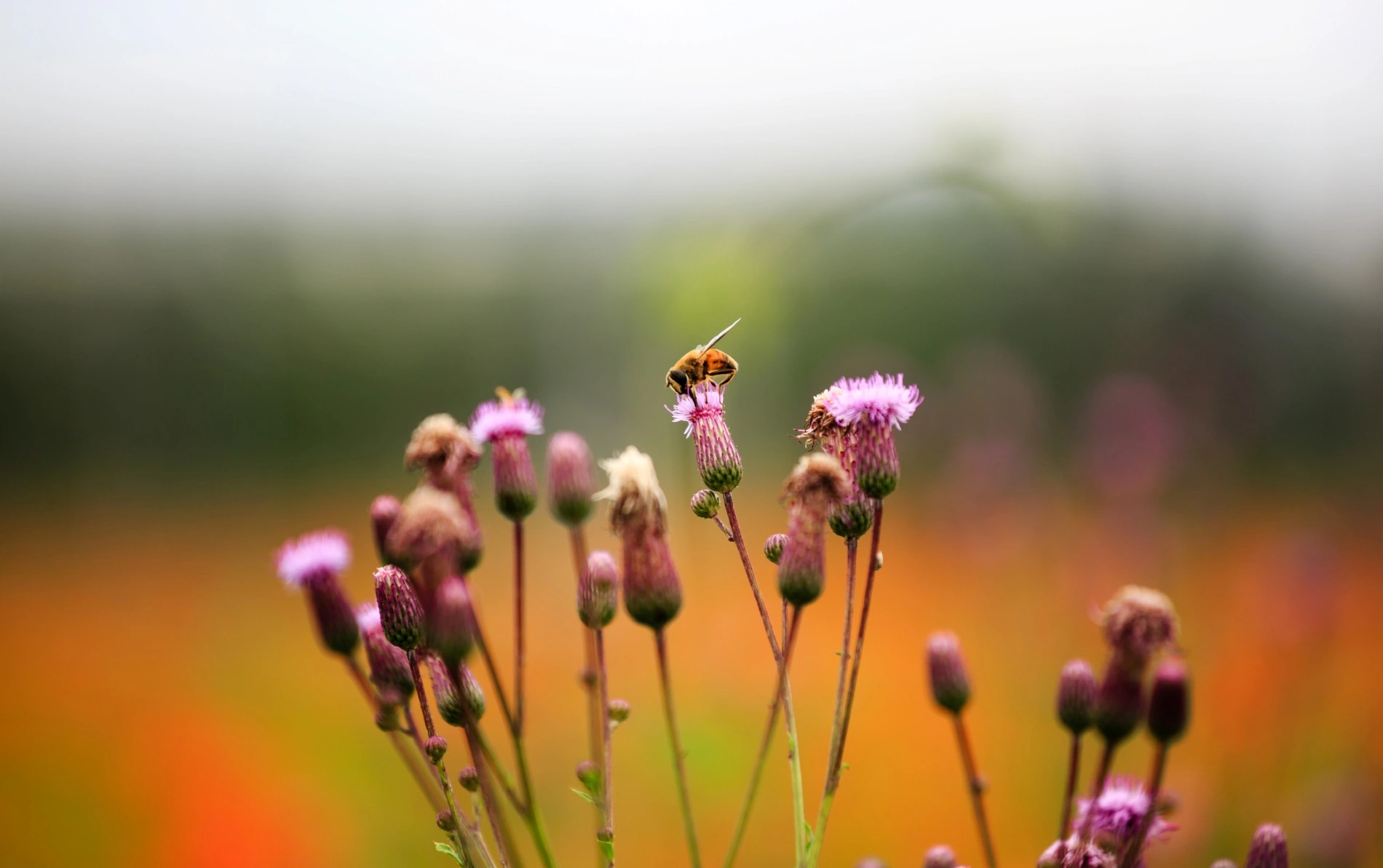
Autumn
Anemone, Aster, Colchicum, Cos, Dahlia-single flower, Heathers, Ivy, Rudbeckia, Sedum, Solidago, Verbena, Verbena bonariensis.
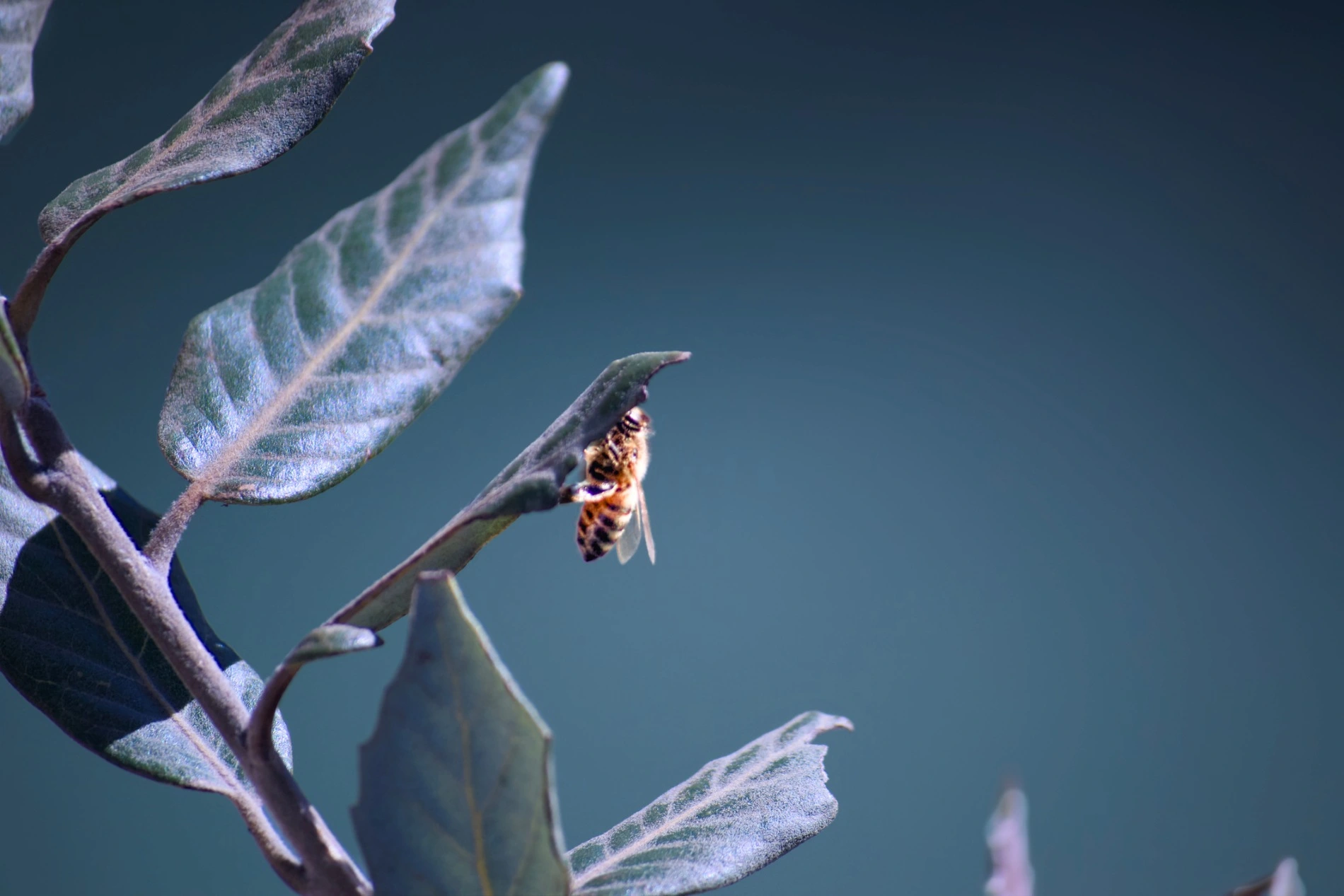
Winter
Crocus, Snowdrop, Hellebore, Ivy, Lonicera (Winter Honeysuckle), Mahonia, Sarcococca, Viburnum, Winter flowering clematis.
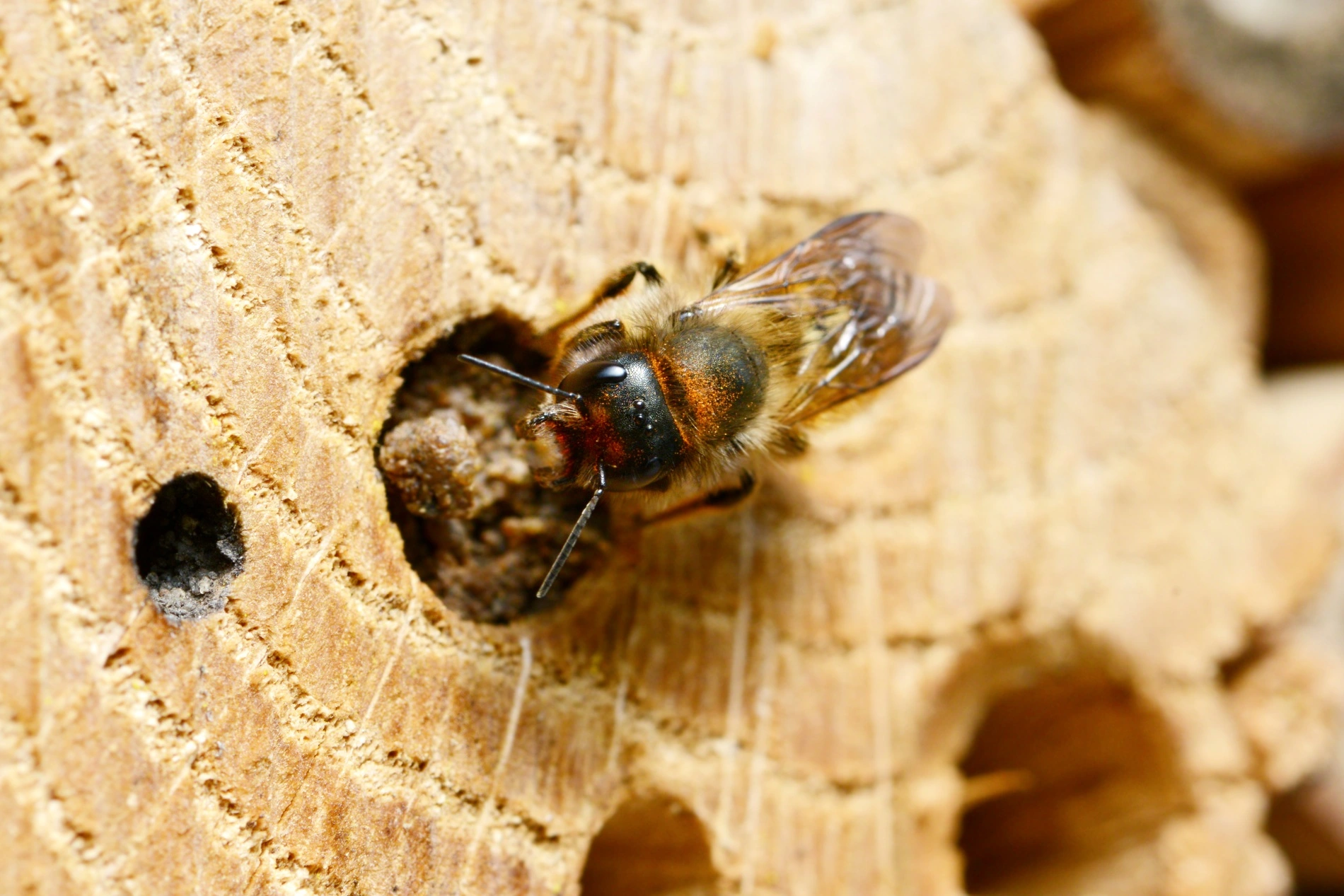
You can also:
Provide shelter for bees
Bees need shelter to rest and some need to hibernate, so why not create a bee hotel, or leave part of your garden to re wild. Bees also nest in mossy lawns, old masonry, muddy banks or hollows in trees. Different bees require different habitats.
Avoid using pesticides in your garden
Explore natural alternatives to control pests in your garden. Species of bees such as the Mining bee, can live in the soil in your garden, so avoid using toxic pesticide above and below ground. It’s equally important!
Let a patch of your lawn grow
Lawn weeds such as dandelions and buttercups are excellent bee plants, which provide vital pollen early in the season. White clover attracts masses of honeybees, while the longer-tongued bumble bees prefer red clover. Why not leave a patch that’s less frequently mown to give them a chance to flower?
9caf88
Five common bees you will see in your garden
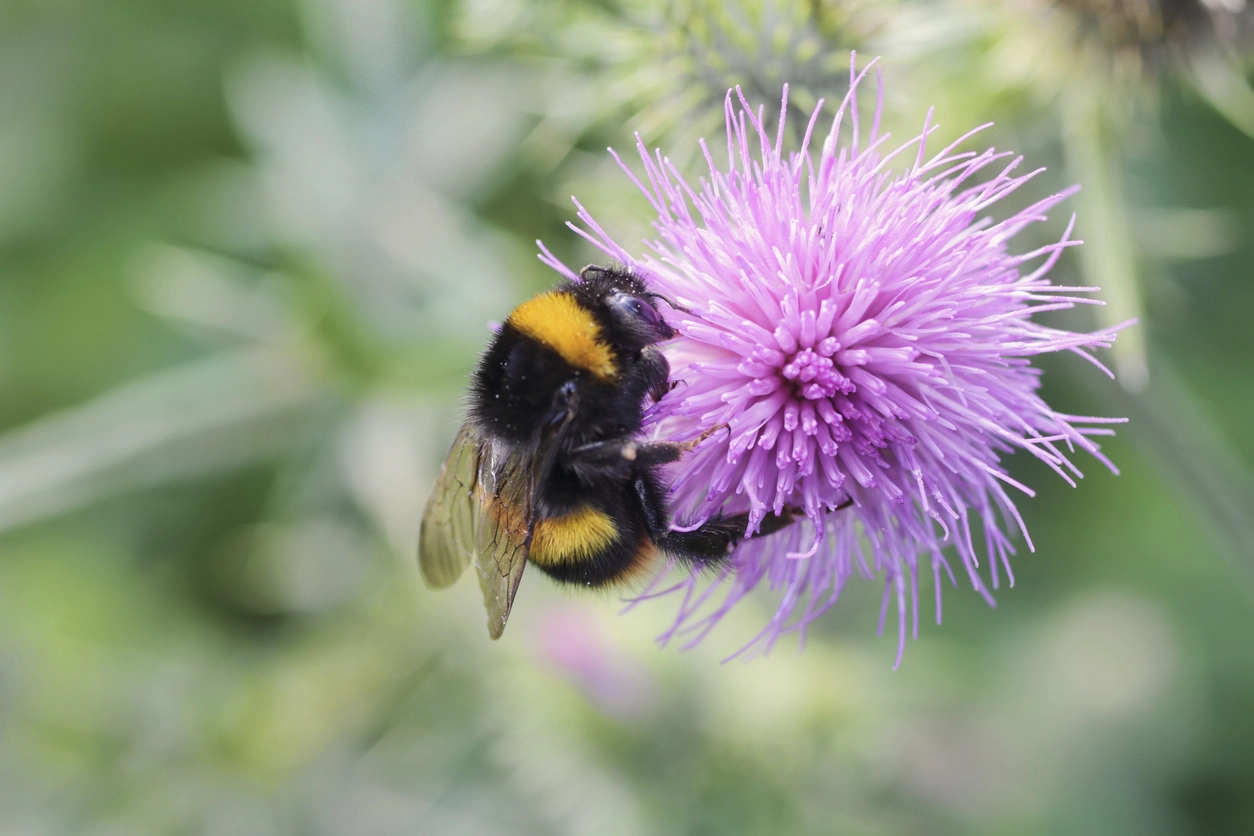
Bumble Bee
This March to October keep an eye out for Bumblebees.
What are they?
The most famous type of bee we see in the UK. There are 24 species of Bumble bee, of which 8 are widespread across the UK. One of the most common is the long tongued, Garden Bumble bee. It is a large, untidy looking bee with a long face and a white tail, with yellow bands at its collar and rear.
Do they help with pollination?
They are master pollinators and are actually 100 times more effective at pollination than a Honey bee! They pollinate through a method called’ buzz pollination’ which means they vibrate rapidly. This releases large amounts of pollen onto the bee and allows them to pollinate a flower in a single visit.
Where do they live?
They are social and generally nest in colonies in dark cavities, under sheds and even in compost heaps.
What can I plant to attract them?
Bumble bees can pollinate a wide array of different flowers, but the Garden Bumble bee, being a long-tongued species, particularly visit those with long tubular florets such as, Aquilegia, Nepeta, Delphiniums, Foxgloves, Honeysuckle, Lupins and Penstemon. Favourites also include Borage, Lavender, Hardy Geraniums, Cosmos, Verbena and fragrant herbs such as Marjoram, Sage, Chives and Rosemary.
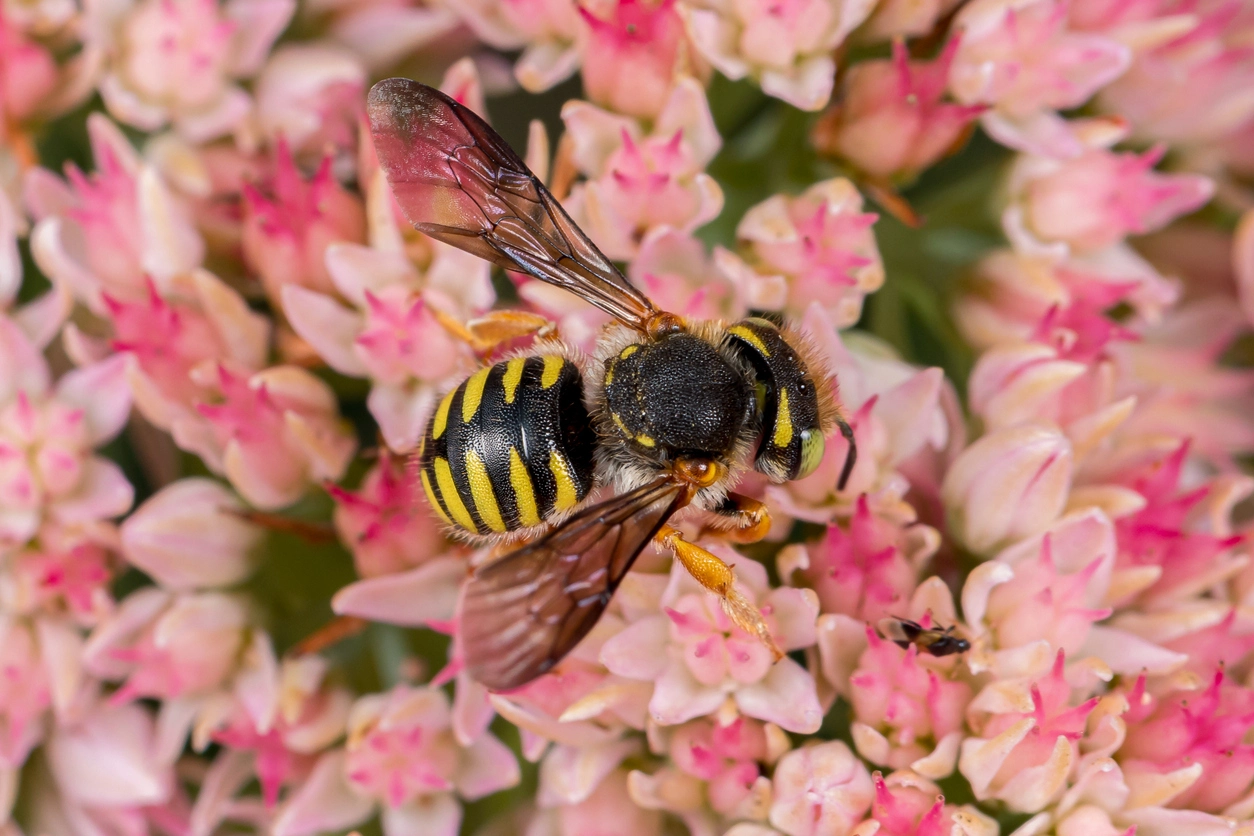
Carder Bee
This March to November keep an eye out for Carder bees.
What are they?
There are three species of ginger bees in the UK, and the one most often found in our gardens is the Common Carder bee. It is one of the earliest bees to emerge in the spring and will feed right through until November. It’s easy to spot because of its colour.
Do they help with pollination?
Carder bees are very important pollinators as they can be seen feeding on flowers from spring until autumn and are widespread in the UK.
Where do they live?
They are social bees and can often be found in gardens, nesting in cavities, old birds’ nests, boxes and mossy lawns. Nests may contain up to 200 workers.
What can I plant to attract them?
As one of the earliest emerging and latest flying bees, aim for a good variety of pollen-rich flowers that have different flower shapes and a range of flowering periods from early spring to late autumn. In spring shrubs such as, Lonicera, Mahonia, Viburnum and Sarcococca. In the summer they particularly favour flowers with long tubular florets, this is because they are a long-tongued species, plants such as, Buddleja, Delphiniums, Foxgloves, Heather and Hebe. In the autumn, Ivy, Michaelmas Daisy, Scabious, Sedum and Verbena.
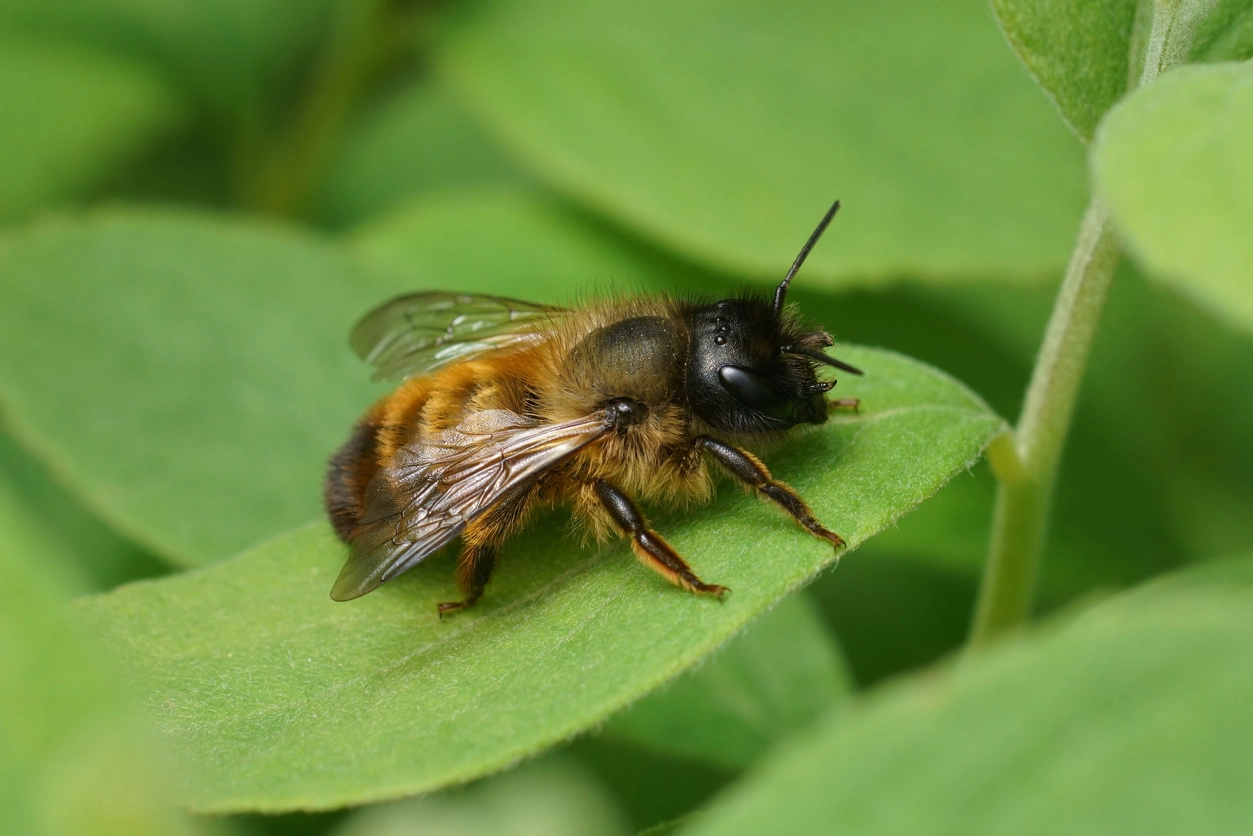
Mason Bee
This April to July keep an eye out for Mason bees.
What are they?
There are 12 species of Mason bee in the UK and if you see one, it’s most likely a Red Mason bee. You will recognise it by its box shape, black head, brown thorax and orange abdomen. It is gentle and non-aggressive.
Do they help with pollination?
There are over 250 species of bee in the UK and the solitary Red Mason bee is one of the very best! This is because it collects pollen on its body and distributes it as it flies between plants. It’s a messy, but very efficient pollinator!
Where do they live?
It’s called the Mason bee because it uses masonry products, like mud, to build its nest. You are likely to see the Red Mason bee in wooden cavities and crumbling walls.
What can I plant to attract them?
Red Mason bees have short tongues and like to feed on open, cottage garden type flowers, they can easily reach. In general, avoid plants with double or multi-petalled flowers, as bees find them difficult to access and they often lack nectar and pollen. In the spring they love to feed on orchard trees such as, Apple, Pear and Plum and in the summer perennials, such as, Cosmos, Echinacea, single Dahlia, Erysimum, Helenium, Lavender and Salvia. Also shrubs such as, Berberis, Ceanothus and Pyracantha.
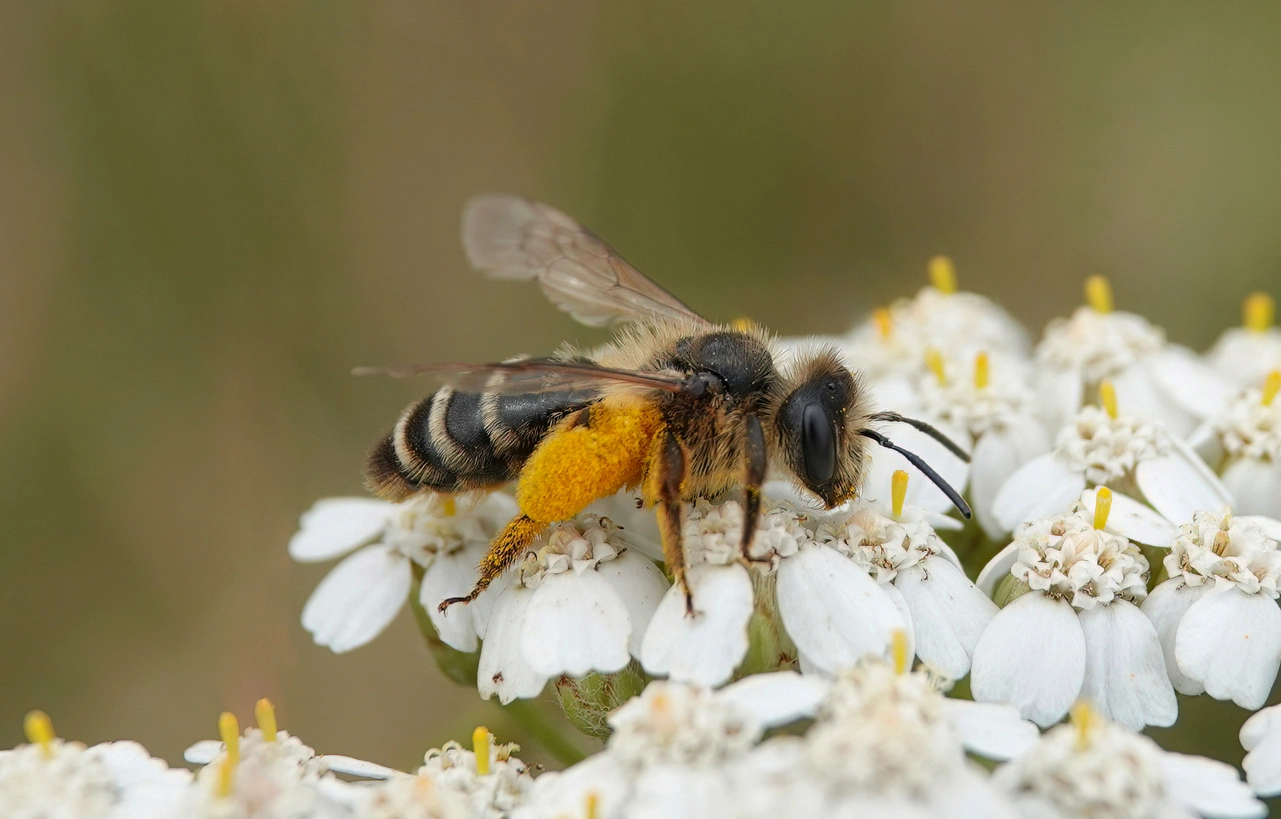
Mining Bee
From March until June keep an eye out for Mining bees.
What are they?
In the UK there are 67 species of Mining bee. One of the most common ones you will find in your garden is the solitary, Tawny Mining bee. It has a thick, orange coat and a black face. It is one of the earliest spring-flying bees and is widespread in early summer.
Do they help with pollination?
They are excellent pollinators and as many of this species are spring-flying bees, they are particularly great for some of our early flowering plants.
Where do they live?
They prefer to live in the ground, so if you see a hole in your lawn, in the flowerbed, or a small volcano of soil, it could be the work of a mining bee.
What can I plant to attract them?
As they are very spring-flying and short tongued, they love feeding on open flowers they can easily reach, such as those on Willow and the blossom from fruit orchard trees including, Apple, Pear and Cherry. Also fruits such as, Blackberry Raspberry and Strawberry. Late spring and early summer flowering perennials and shrubs, such as Aubretia, Allium, Bluebells, Berberis, Cistus, Heathers and Pulmonaria, are also favoured.
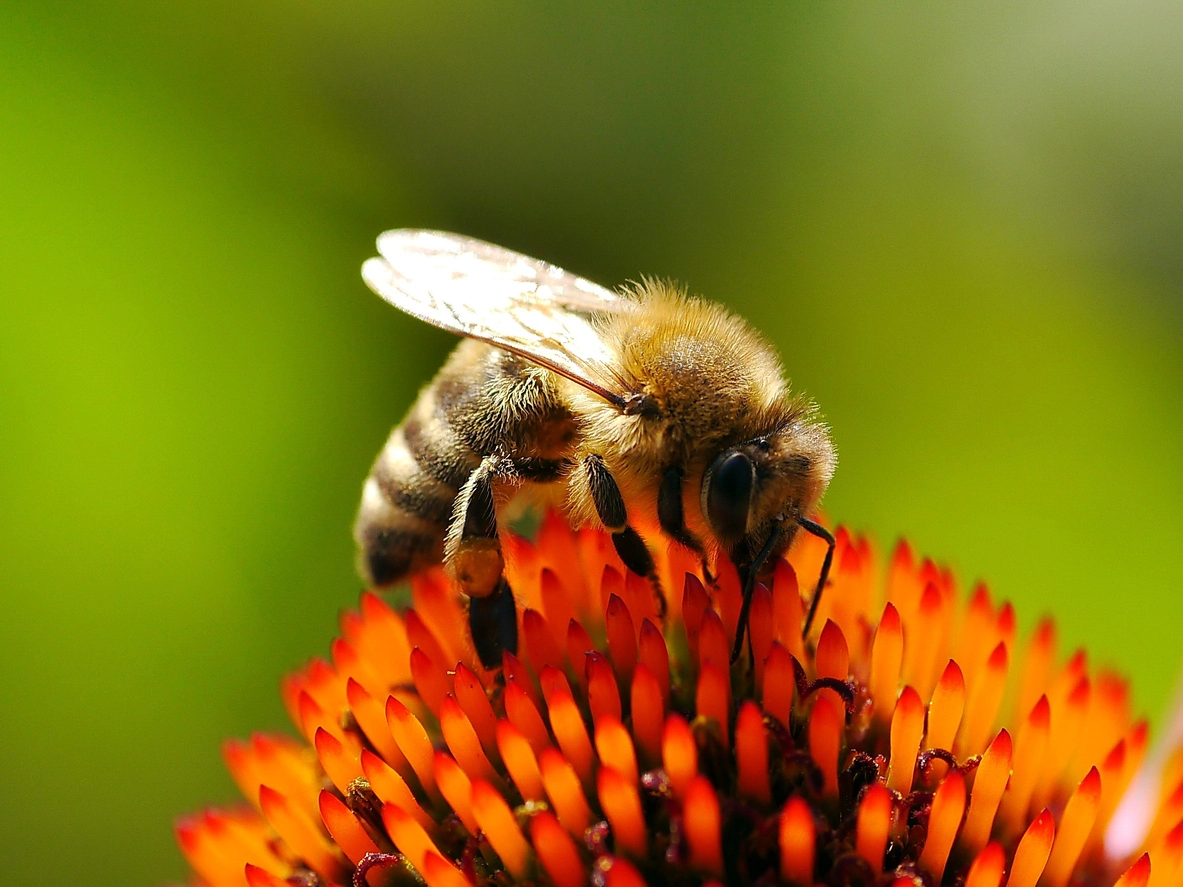
Honey Bee
This March until September keep an eye out for Honeybees.
What are they?
We have just one species of Honey bee in the UK, identified by its slim, sandy thorax and black abdomen with golden-amber bands.
Do they help with pollination?
Individually it is not as efficient as a solitary bee. However, because of the sheer number of Honey bees in a colony, up to 50,000, in the summer months, a hive is a very efficient method of pollinating flowers and plants and it can be moved to where it is needed most.
Where do they live?
Honey bees mostly live in hives of wax honeycombs. They have been domesticated for centuries and it is rare to find a truly wild colony.
What can I plant to attract them?
They have medium length tongues and like to feed on open flowers they can easily reach. In general, avoid plants with double or multi-petalled flowers. Bees find them difficult to access and they often lack nectar and pollen. Emerging Honey bees need plants with spring nectar and pollen, such as Hellebore or Snowdrops. Also in summer, shrubs such as, Escallonia, Cytisus, Hypericum, Philadelphus, Ceanothus, Prunus and Buddleja. Perennials to plant include, Campanula, Cosmos, Echinacea, Lavender, Nepeta, Salvia, Rudbeckia, and Verbena.
